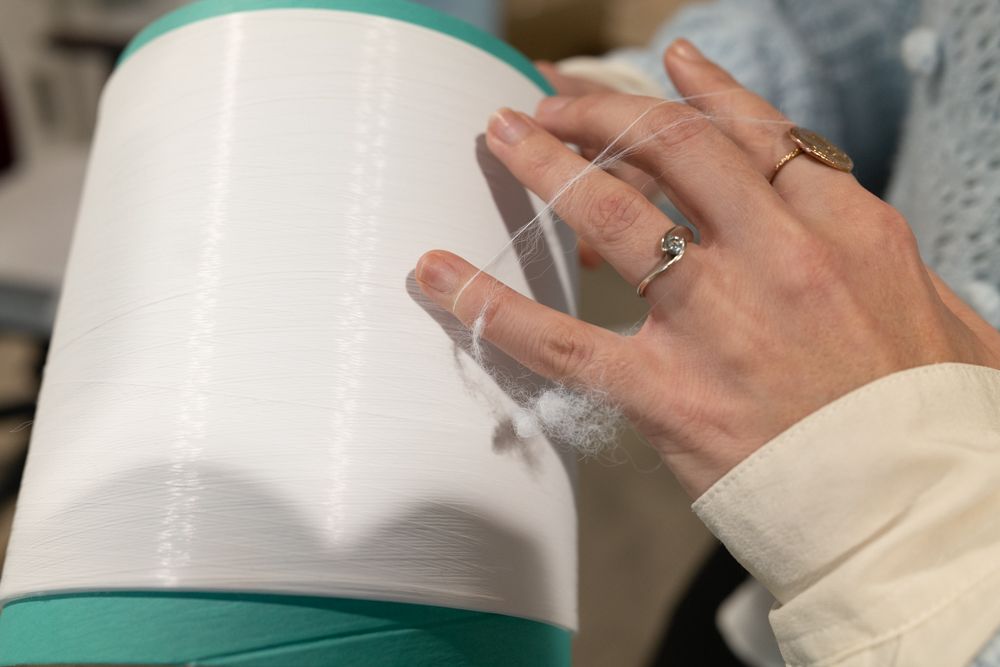
Photocatalytic Sustainable Wire
Awards
Information
PureNat has developed a brand new patented biomimetic material, in the form of a flexible wire, that optimizes the principle of photocatalysis and allows to permanently destroy pollutants from the air. PureNat wire opens the field of possibilities to design new air handling systems with 3 important improvements:
- “Plug and Play”. Developed purifying cores are malleable unlike breakers used on the market. This makes it possible to considerably minimize the clutter of purifying systems, and to integrate with objects already present in buildings (acoustic correctors, luminaires, etc.) and any system whatever its geometry and constraints. The integratability of the solution gives access to a multitude of industrial applications: building, aerospace, automotive, construction, agri-food, etc.
- Performance. The innovative process maximises the content of the cleaning agent in contact with the air, and allows to achieve purification performance exceeding the market offer.
- Sustainability. The totally innovative shaping of this technology improves the strength of the cleaning agent, thus guaranteeing long-lasting efficiency without leaching nanoparticles. As the content of the pollutant is maximized, the destruction of pollutants is total and avoids the generation of dangerous by-products, a current problem of the photocatalytic systems of the market. The safety is guaranteed.
Web page
Argument
Nous avons démontré que le filtre photocatalytique Quartzel® PCO de la marque Saint-Gobain qui est un filtre à particules en fibres de verre sur lequel sont fixées des nanoparticules de TiO2, s’encrasse au cours du temps (« empoisonnement » des sites actifs) lorsqu’il est exposé à certains polluants tels que le toluène alors que notre matériau reste blanc. La référence perd en efficacité au cours du temps mais pas notre fil. Concernant les performances de dépollution du fil PureNat, nous avons montré qu’elles sont 2 fois supérieures à celles du Quartzel® PCO pour la dégradation du toluène.
Autre aspect novateur, il a été prouvé que notre textile ne génère pas de nouveaux polluants lors de la dégradation des polluants de l’air (sous-produits) à la différence des systèmes photocatalytiques actuels qui ont tendance à relarguer des nanoparticules de TiO2, ou des sous-produits reconnus comme toxiques pour la santé. La fabrication du fil se fait à température ambiante.
